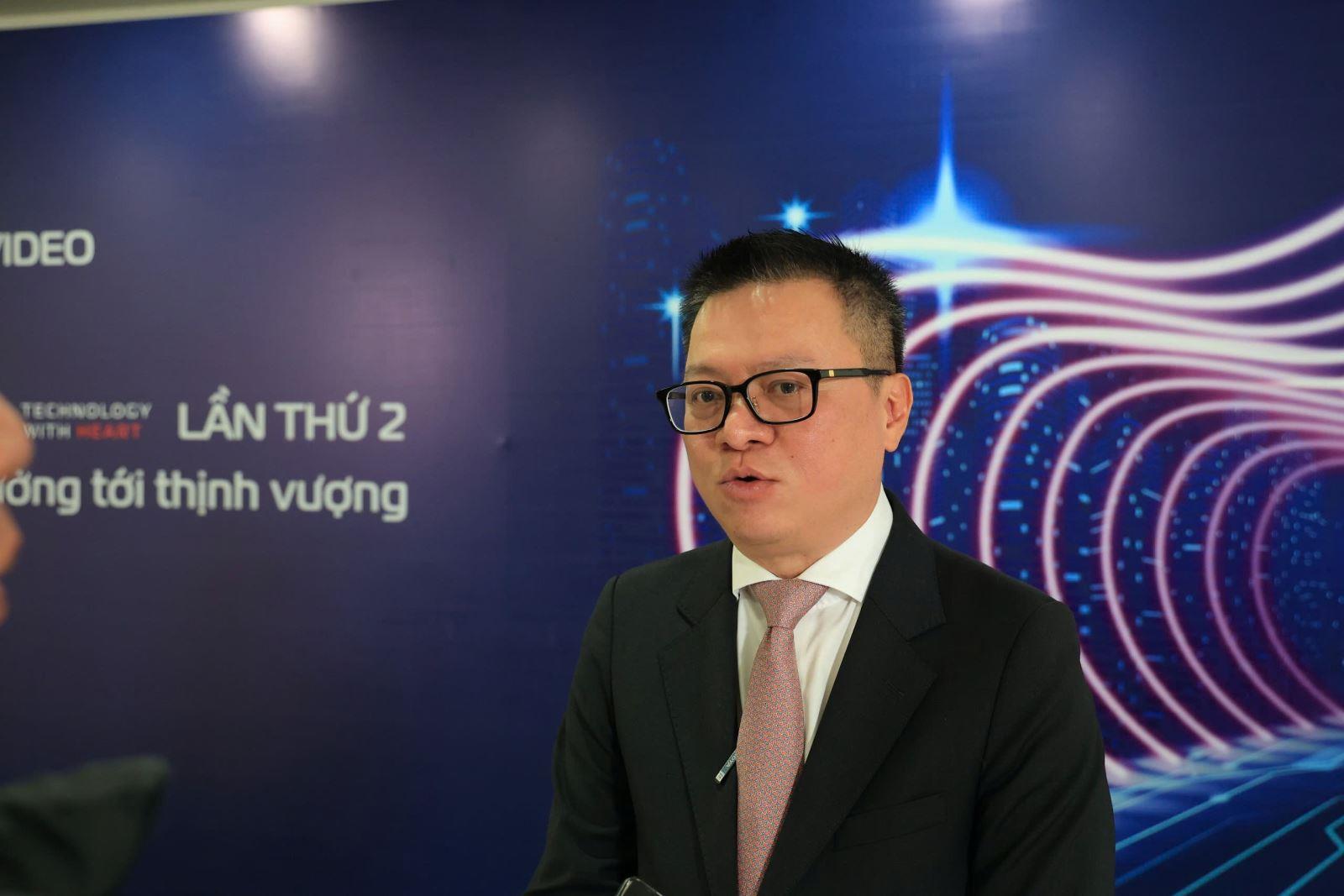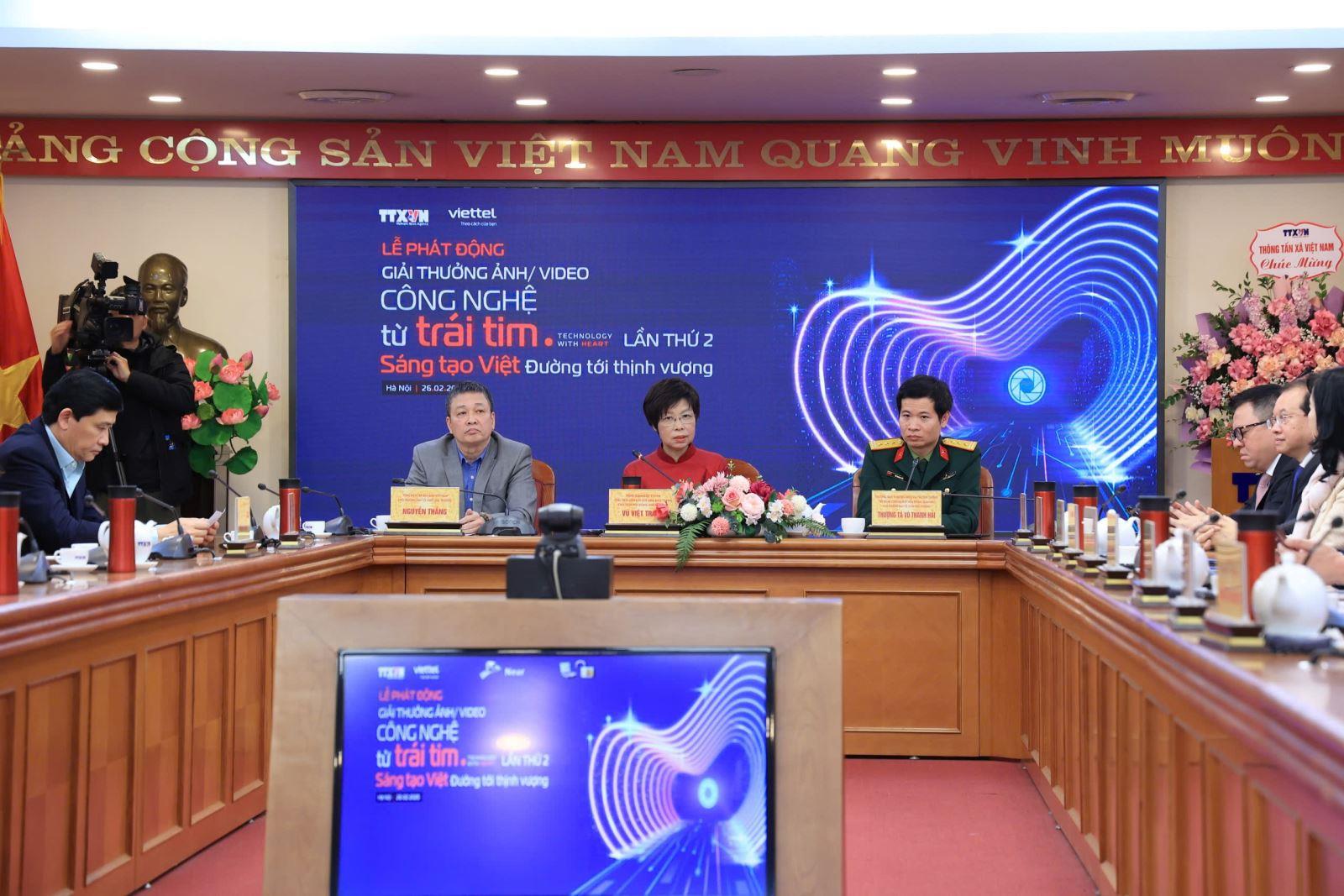“Technology with Heart” award helps promote innovation
Hanoi (VNA) - Awards like the "Technology with Heart" serve as an effective way to further spread the Politburo’s Resolution 57, as well as general directions on the application of science and technology, innovation, and digital transformation, according to Le Quoc Minh, member of the Party Central Committee, President of the Vietnam Journalists' Association (VJA), and Editor-in-Chief of Nhan Dan Newspaper.
On the occasion of the launch of the second Photo and Video Award “Technology with Heart” by the Vietnam News Agency and the Military Industry and Telecoms Group (VIETTEL) on February 26, Minh talked about the award’s significance.
Reporter: This is the second year the "Technology with Heart" Award is being held. This year, the award's theme “Vietnamese Creativity – Path to Prosperity,” aligns with the promotion of innovation, science and technology development, and digital transformation according to the Party's Resolution 57-NQ/TW. How do you assess the ward's role in spreading the spirit of promoting technology application and innovation across various sectors of society?
Mr. Le Quoc Minh: Science and technology play a crucial role. Resolution 57 emphasises the importance of the application of science and technology, innovation, and digital transformation, and also highlights the critical role of technology in all aspects of life, which has become more urgent than ever.

However, despite the Party and State's directions, there are still delays in specific actions across various sectors. Therefore, dissemination and communication activities to promote the importance of science and technology in life need to be strongly promoted.
In addition to traditional communication methods through newspaper, radio, television, and new media platforms, awards like the "Technology with Heart" serve as powerful means to further spread Resolution 57 and general directions on the application of science and technology, innovation, and digital transformation. Of course, within the scope of a photo and video competition, is only a part of the broader journalistic approach.
However, vibrant images and inspiring videos would strongly encourage people, especially those directly involved in business and production activities, to boldly apply science and technology, embrace digital transformation, and foster continuous creativity.
Reporter: Technology has fundamentally changed the journalism industry. So, how should journalists and press agencies adapt to master technology, while maintaining the mission of traditional information transmission, and keeping up with modern media trends to effectively lead changes in society? In the course of their work, what should journalists do to ensure "technology" and "heart" go hand in hand in each piece, especially in photos and video clips?
Mr. Le Quoc Minh: In the past, we used simple tools like pen, camera, and notebook to do journalism. However, over the past 20 years, technology has played a vital role in connecting people through the Internet and social networks. A good article or an engaging radio or TV report, without technology, would struggle to reach its target audience and be widely shared, especially internationally.
Recently, for journalism, content remains the "king," but without technology and the unique styles of each newspaper, it’s impossible to create a distinct identity, especially in the present context that journalists cannot work without technology, whether for print, radio, or television, particularly digital media, where its role is increasingly important. Recently, the role of artificial intelligence (AI) has been growing.
AI allows precise tracking of users, making it effective in performing tasks that would otherwise be tedious and time-consuming. AI targets the right audience, even personalising content with different versions for each user.
With AI and technology in general, new, exciting products like virtual reality (VR) and augmented reality (AR) are being created.
Press agencies should proactively experiment with and embrace technology. Of course, no technology is universal for all newsrooms - some may use one type of software while others may find other technological solutions more effective. However, it's important to boldly experiment and accept potential mistakes, and even failures, in order to find technologies that work efficiently.
In the digital transformation journey, experience shows that simply purchasing more technology or machinery does not guarantee success. Instead, it requires a complete shift in mindset regarding newsroom operations and content production to effectively leverage technology.
We have also advised press agencies not to lag behind but to proactively embrace technology to stay ahead, and anticipate the needs of readers and audiences instead of merely following them. This requires investment, which can be difficult for smaller agencies. However, they can collaborate with technology companies rather than building their own in-house technology departments, as this could be costly and time-consuming.
Of course, this should be done with consideration for each newsroom's financial capabilities to experiment with new technologies. If the media fails to adopt and effectively use technology, and ends up lagging behind to a point where technology dominates the industry, that is something we should avoid.
Reporter: The "Technology with Heart" Award not only honours technological achievements but also creates momentum for creativity and connectivity within the community. What are your expectations for the impact of this award in improving content quality in Vietnamese journalism, innovating the way media outlets engage with readers, and contributing to the development of a digital society?
Mr. Le Quoc Minh: This competition is just one piece of the bigger picture, but it has already done a good job of sparking interest in technology. Those engaging in journalism, from leaders to reporters and editors, need to embrace the latest technology if they want to work more effectively.

Today, journalism demands not only strong writing and photography skills but also the ability to harness technology, from simple tools like smartphones and cameras to more advanced technologies.
For example, reporters now must know how to use technology, such as using AI software to filter data and uncover information.
Traditional methods of information search are no longer suitable today. People no longer rely on search engines like Google to look for information. Instead, AI tools are now needed to support quicker searches, especially for more complex issues. By using AI tools for analysis, journalists can identify trends and understand what content is attracting the most attention from users. This helps news outlets target their audience more effectively and create content that meets the needs of readers.
Some media outlets have already taken the right steps in applying technology to journalism. For example, Nhan Dan Newspaper has sent reporters to both domestic and international AI courses, and specialised programmes. In 2025, the Vietnam Journalists Association plans to conduct extensive training on AI for press agencies.
Abusing AI is not always a good approach. For example, there is ongoing debate about whether AI-generated images can violate copyright, as such images are created by data from millions of different sources. However, some media outlets have used these images casually, which could lead to potential copyright disputes.
There is also the belief that machines can write great articles, and people may order AI to generate content. This raises the issue of authorship - should the author be listed as the person with the support of AI, or AI itself? If everything is accurate, it might not be an issue, but when false information, or even fake news, is mixed in, who will be held accountable?
Currently, as many questions about how to use technology and AI effectively remain unresolved, media outlets must raise awareness and ensure these tools are used responsibly.
Reporter: Thank you very much!

